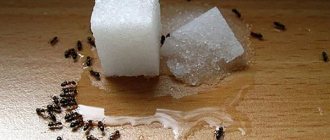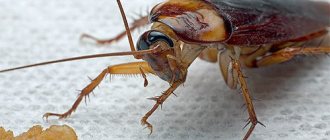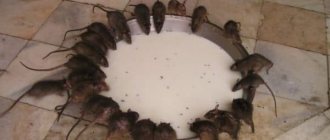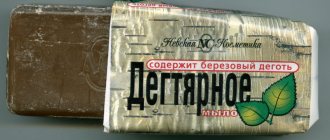Reasons for the appearance and spread of moths
There are many ways to bring moths into the house. A small, inconspicuous butterfly flies into the light through an open window or balcony door, but this rarely happens.
More often, moths enter a home in the following ways:
- through used or new furniture that has been lying in a warehouse for a long time;
- after purchasing food products in unsealed packaging that were stored in violation of conditions or terms;
- when buying clothes from private advertisements, in second-hand stores, pawn shops, and even in stores;
- through donated items;
- using the ventilation hole, through the front door if it is insulated with felt.
Moths don't come out of nowhere. If butterflies appear, it means the owners themselves brought things, food, furniture into the house that were already infested with larvae, or the insects entered from the street, from neighbors. The risk of food moths entering the apartments of residents increases if grocery stores or catering establishments are located on the first floors of apartment buildings.
Sometimes dogs bring butterflies into the home. Insects use animal fur as temporary shelter. The larvae prefer old, worn things, but they also feed on new items.
How to deal with moths in an apartment?
To make insect control at home more effective, moths are first classified. Butterfly pests are distinguished by taste preferences and habitats. Appropriate control methods must be applied to each species.
food moth
If an insect with silvery-white wings with a brown pattern lays eggs in bags of cereals, then it is a grain moth. In bags with dried fruits lives a fruit tree. In addition to those listed, the food species include potato and flour moths.
Placing bulk products in closed metal containers or glass jars solves the problem in the absence of masonry. If the product is already contaminated, then these measures will only worsen the situation, since the larvae develop quickly in a warm, unventilated environment.
One of the ways to exterminate pests is to block access to water, dry washing, and a working faucet. A fine mesh is attached to the ventilation hole, preventing butterflies from entering from neighbors.
To combat parasites, traps with pheromones are used or essential oils, black peppercorns, garlic, and citrus peels are placed on the shelves.
Clothes moth
Clothes moth or clothes moth, woolen moth, or fur moth is a light yellow butterfly with white fluff on its head that lives in closets with clothes. The favorite food of small yellowish caterpillars measuring 5 mm is wool, silk and fur. In the absence of them, the larvae are content with cotton fabric.
The house clothes moth is a ubiquitous insect and is well adapted to existing conditions. If there are no products made from natural fabrics, the butterfly lays up to 100 eggs in products made from semi-synthetic materials and feeds on them.
You should not chase butterflies with the desire to destroy them. Males fly, and females are busy laying eggs.
Parasites cannot tolerate sunlight and die when washed, steamed, or frozen. To kill insects in the wardrobe, tablets, plates, aerosols, and sections are used. Each of the means has pros and cons.
If there is a fear of allergies from purchased insecticides, pest control is organized by resorting to folk recipes.
Furniture moth
An inconspicuous yellow-gray with a red tint, the butterfly lays up to 300 eggs in the upholstery of chairs, sofas, on carpets, rugs, and penetrates into clothing closets. The small 1.5 cm larvae are difficult to distinguish, but this does not prevent them from causing noticeable damage. Insects are repelled by fumigators with insecticides, tablets, and odorous plants. It is believed that they are afraid of the smell of geraniums.
In the photo: furniture moth and its larvae
Effective methods of pest control include insecticide treatment, regular general cleaning, cleaning and beating carpets outdoors in sunlight and cold.
At the initial stage, tablets, plates, and placing odorous plants (tansy, mint, lavender, wormwood) in the corners can be used to combat furniture moths. During mass distribution, aerosols and sprays are used.
Folk remedies
And finally, you should find out how to remove moths using traditional methods. All the tools and techniques that will be described below do not involve the use of any chemicals, are available to everyone and are inexpensive. However, at the same time, it is quite problematic to destroy moths with their help; they are intended rather to repel insects. For this reason, to achieve a positive result, they should be used to combat parasites in combination with more powerful modern drugs.
- Essential oils. For moths, the smells of essential oils such as orange, geranium and lavender are repulsive. They need to soak cotton pads and place them in places where moths accumulate.
- Repellent plants. Dried geranium or lavender herbs are tied in bunches and hung in the closet.
- You can use scented toilet soap as a deterrent.
- Newspaper helps against moths. They wrap or rearrange things in it and leave them in the closet. However, this method is not suitable for light fabrics and fur products.
As you know, taking preventative measures is always easier than fighting moths afterwards. Therefore, do not forget to regularly ventilate your closet, clean fur and woolen items, and shake out items on shelves and hangers from time to time.
How to get rid of moth larvae?
While it is not difficult to get rid of butterflies, methods of fighting caterpillars are more labor-intensive.
Tips for killing food moth larvae in the kitchen:
- Thoroughly vacuum cabinets that have been emptied of food.
- Wash the interior surfaces and dry. Then wipe with a sponge soaked in apple cider vinegar.
- Inspect bags and containers with bulk products.
- If you find clutches or larvae, feel free to get rid of the food. They are toxic and not suitable for cooking.
- If there is no masonry, place the dishes with cereal in the microwave for 5 minutes. Turn on the microwave oven at maximum power. An alternative is to use the oven and freeze the food for a week.
- Wash containers with soap, dry, and wipe with vinegar.
To save clothes from clothes moth larvae, follow these steps:
- remove things from the closet, shake each one;
- get rid of the hopelessly damaged ones;
- take fur coats, coats, fur hats out onto the balcony under the sun’s rays;
- wash bed linen and woolen items for at least half an hour or freeze for 24 hours;
- wash the walls of the wardrobe with a special furniture cleaner, especially carefully - the far dark corners;
- place moth repellent on the shelves - tablets, balls, sections;
Sprays, aerosols, and taking things outside in sunny or frosty weather help destroy larvae on carpets, paths, and furniture.
Means to combat moths and their larvae
The fight against moths in the home is approached comprehensively. Chemical industry enterprises produce products for each type of moth and different modes of action:
- contact and non-contact sprays, aerosols;
- traps for food moths;
- universal plates and liquids for fumigators;
- easy to use tablets and sections.
Those who do not accept chemicals in the house use fragrant products, plants, oils, restore order, and do regular general cleaning.
Aerosols
Aerosols and sprays against moths act quickly and effectively. In addition to undeniable advantages, they have disadvantages. The preparations require time and energy when treating premises, have a pungent odor, and are not harmless to health.
The following brands are common among users:
- Raptor
An aerosol in a 175 ml container after spraying is valid for up to a year. Non-toxic to people, does not leave stains. Destroys butterflies, larvae, egg laying. Fur and textiles, including furniture upholstery and carpets, are subject to insecticide treatment.
- Clean house
A product with a floral, pungent odor designed to combat furniture moths. Not suitable for textiles and fur. The aerosol is sprayed onto the cabinet walls and has an instant effect. The product is economical, 150 ml is enough for two to three complete treatments of the room.
- ARGUS
Contact spray is designed for spraying to lightly moisturize outerwear, carpets, and shoes. Effective in the fight against moths and skin beetles. Available in a volume of 100 ml.
- Armol
In addition to the Armol aerosol, which smells of lavender, the manufacturer produces Armol Expert odorless. Both brands are designed to protect against insects that have settled in clothes, curtains, furniture, and carpets. Aerosols leave no traces.
- Klaus Antimol
The contents of a 300 ml bottle are intended to combat clothes moths. Used in wardrobes with wool and fur products. The product is scented with lavender.
- Mosquitol
A 100 ml spray is designed to treat a surface measuring 8 square meters. m. Used in residential areas to get rid of moths that lay eggs in wool, silk and fur products. Does not contain preservatives, smells of lavender, is valid for 12 months.
Although insecticide manufacturers claim that aerosols are safe, it is recommended to use a respirator when treating premises. Signs of intoxication may appear - dizziness, allergic reactions. At the end of the work, it is advisable to leave the apartment for 2-3 hours for fresh air. After returning, the rooms are ventilated.
Traps
The principle of operation of the traps is based on attracting male grain and fruit moths with female pheromones applied to a plate with glue. Without mating, the moth does not reproduce. This type of protection does not include toxic substances and is therefore safe for humans.
It is used to combat food moths that have settled in cereals, nuts, flour and confectionery products, tea, and dried fruits. The product is effective against butterflies, but does not affect the development of larvae.
Popular traps include:
- Raptor. Produced in Latvia. The kit includes two odorless plates that stick to a flat surface or hang from a mount. One plate is enough for 1 kitchen cabinet. Raptor has the longest validity period - 3 months.
- Made in Germany. The packaging contains two cardboard blocks with harmless pheromones on an adhesive base. The effect of the active substance lasts for 1.5 months, then the block is replaced with a new one.
- The manufacturer is the same as Aeroxon. The difference is that the sticky plate can easily be transformed into a triangular house. Pheromones disappear after 2 months.
It is not recommended to place more than two traps in the kitchen, since excess concentration has the opposite effect - it scares away males.
Fumigators
A convenient and easy-to-use device based on heating a plate or liquid and releasing active substances into the air. When using fumigators to get rid of mosquitoes, users often do not know that insecticides are also harmful to moths.
The product is not the most effective, since the low-concentrated active substance does not spread immediately, but after at least 12 hours. The disadvantages include the difficulty of placing it in a closet with clothes, since an extension cord is needed.
For the popular inexpensive models of fumigators Dik-3 and Dik-6, the purchase of plates is additionally required. The Raid device is fully equipped, but costs several times more.
The action of the Raptor aquafumigator plugged into the outlet is based on the release of insecticidal steam formed when water is added to a metal container with the substance cyphenothrin. The Japanese product is declared to be effective and safe for human health.
Sections
The sections prevent the appearance of moths, but do not harm existing larvae in any way. The product attracts housewives with its safety and pleasant, mild floral scent. The product contains the active ingredient in a plastic container and a cardboard hook, convenient for placement on a hanger bar.
Popular sections of the Raptor and Mosquitall brands. Users note that you can not only get rid of moths forever, but also deodorize your clothes.
Pills
Modern tablets are often produced in the form of balls with the scent of lemon, eucalyptus, and lavender.
Popular tablets:
- Mothballs and briquettes effectively repel butterflies with a pungent odor and prevent the appearance of clutches. It is better to avoid the product, as its carcinogenic properties have been proven.
- Clean house - balls are made to protect wool and fur products. To get the result, place 2 tablets on a shelf or in a drawer. Change after 6 months.
- Greenfield - talc tablets, flavored with lavender, are valid for up to six months. The package weighs 100 g.
If used incorrectly, or if the concentration of the active substance is exceeded, the tablets depress the respiratory system and have an adverse effect on the liver.
Folk remedies
People with poor health and prone to allergic reactions prefer folk remedies and natural recipes to “chemicals.”
The following natural recipes are popular among housewives:
- Fir, lavender, and clove essential oils are applied in an amount of 2-3 drops to a cotton pad placed on the shelves of closets, in sealed bags with clothes.
- The pungent smell of garlic, whose cloves are laid out in sections, drawers, shelves of kitchen cabinets and wardrobes, makes pests fly away from the dangerous place.
- Vinegar, which is regularly wiped down the inside surfaces of cabinets, repels moths. Insects have no desire to leave clutches in an inappropriate place.
- Things saturated with the smell of laundry soap do not attract butterflies. They don't like the smell of lye. It is not necessary to use detergent when washing. Placed pieces of soap will also serve their purpose.
- The specific smell of black pepper, cloves and bay leaves is unpleasant to moths, but does not spoil the taste of the food. Therefore, spices serve as a reliable preventative measure in the kitchen.
- The esters released by geranium leaves are unacceptable to moths. The insect does not settle in rooms with a plant.
- Printing ink on newspapers protects winter shoes during storage.
- The aroma of citrus peels, pleasant to people, repels butterflies for a long time.
- Sprigs of tansy placed on the shelves prevent the appearance of pests.
- Dry lavender is placed in the corners of the living room.
For a long time in Russia, housewives used sachets - canvas bags filled with dry aromatic herbs, placed in wardrobes. If you include mint, lavender, oregano in the ingredients of the filler, in addition to tasty-smelling things, you get an effective remedy for moths.
Prevention
You know how to deal with house moths, but do you know how to prevent re-infestation? Prevention measures will help you with this:
- All items in lockers should be clean, especially those that are put aside until next season;
- Periodically wipe the interior surfaces of cabinets and wardrobes, treat them with disinfectants or vinegar solution;
- Store groceries in airtight jars;
- Ventilate the house regularly and clean it;
- Approximately once a month, clean carpets and upholstery with water and disinfectant;
- Fur and wool products must be wrapped in clean plastic bags or newspapers (insects cannot stand the aroma of printing ink), and fur coats must be placed in thick paper covers. It wouldn’t hurt to spray them with an anti-moth preparation;
- Carpets, blankets, rugs, pillows, etc. should be taken outside at least 2 times a year for airing and beating;
- Winter shoes sent for storage also need to be prepared. To do this, remove the insoles, wash them well and dry them completely. Place tobacco, lavender or ether-soaked napkins in the shoes themselves.











